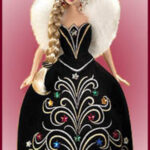People’s behaviors are based on experience, surroundings, friends, and how they were socialized by their parents. The toys that children play with can set the roles of genders. When boys are given a tool set, they would imagine themselves to be a mechanic. A dump truck or Hot Wheels would either get them interested in construction or just cars in general. In High School it was the guys fighting over which car was better, the Ford or Chevy. Girl’s never had such a discussion.
Girls on the other hand have toys such as Barbie dolls, regular baby dolls, or kitchen sets. It can set up factors into their behavior. Perhaps the girl becomes very conscious of how she dresses herself. A Barbie doll can be changed into many outfits. With other dolls as well, the girl can comb her hair and with some even put on makeup that wipes on and off. This is teaching girls about makeup, combing their hair, and dressing themselves.
It goes to show that toys set what it means to socially be a boy or a girl. With the trucks, balls, Legos, and tool sets it shows that boys are meant to play louder, rougher, and dirtier. They bring their trucks to the sand box and throw dirt around. Towers are created with the Legos as high as they can be made and then knocked over. With the tea sets, dolls, Barbies, and nurse sets it sets the girls to be proper and clean. The girls will sit cross legged in their dresses around a table and drink pretend tea. Both boys and girls role-play what their toys give them the opportunities to. They imitate, play, and sometimes even turn it into a game.
These imitations can later turn into learning how to be a boy or a girl. Socially boys are expected to walk more dramatically, be louder, dirtier, and find the jobs that will give them more money such as construction worker, policemen, ect. Girls are expected to be clean, cross their legs, and be passive. They must then learn to take care of babies, shop, dress up, and become no more than perhaps a nurse. The toys immediately set the genders apart to what they must become socially.
Since these toys separate the genders, it could cause social interaction to change between boys and girls. If boys are only meant to play cars, then the girls can’t play with the boys. When the girls bring out their kitchen sets and sit around a table playing house or tea party, the boys are not invited as well. Their socialization changes because the toys separate the gender role so distinctively.
Because these roles are separated from infant on, it continues to keep gender inequality. Boys get the image that they are the only ones that should get dirty, drive around in trucks, do the yard work, go to work, and be head of the household. The girls make the supper, get the baby cleaned and fed, and maybe work as a nurse or chef. These toys keep the inequality continuing because the roles the toys portray are always geared towards one gender or the other, so that’s what the parents buy.
The negative impact is that boys will have the impression that they should have power and dominance over the girls, while the girls don’t think that they can make something of themselves in society except for in the household. Parents should expose their children to all kinds of toys that are not only non-gender specific, but to toys that are perhaps specific to the other gender. If these toys are shown early on, it won’t seem strange for them to pick up on unless they are exposed to other boys or girls that play with only gender specific toys and begin to pick on them. So even exposing a child to a toy not specific to their gender can be a negative thing if other kids don’t play that way. Still, if the child likes the toy, and has an open perspective on gender roles while growing up, then it is all worth it.
It seems like today males and females are not as unequal as they use to be. But nevertheless, the way a child is brought up, and the toys they play with, can really play a role in what kind of a person they will some day become.






